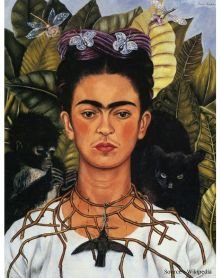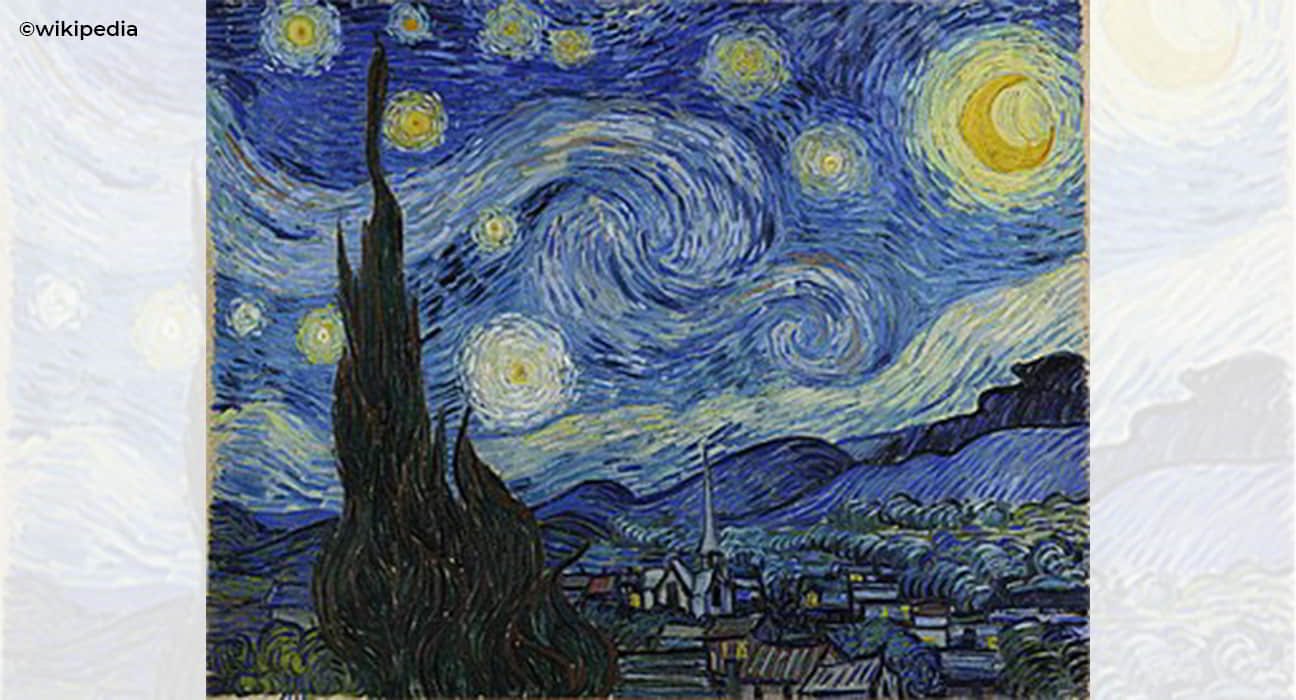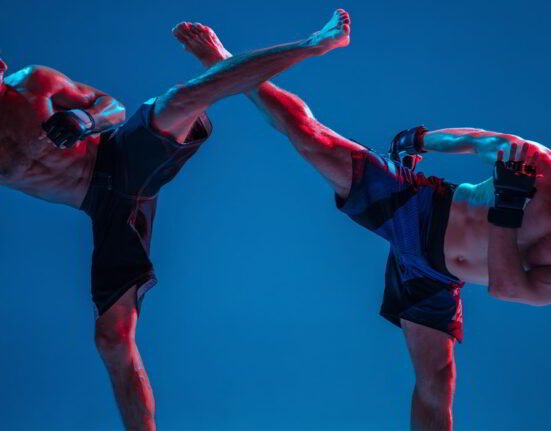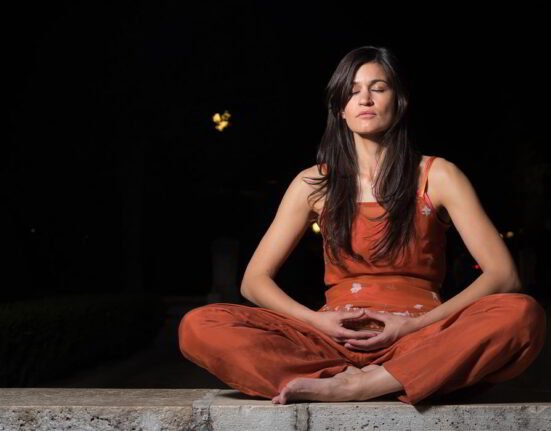The creator of the famous Starry Night, Vincent Van Gogh described himself as a “man of great passions.” With a diagnosis of a mental illness, he was oscillating between manic and depressive episodes. He sometimes experiences episodes where he is in “a fury of work”, whereas other times he is in a state of despair where he feels like there is “too much to express.” Freud, in his case studies, theorized that mania develops as a coping mechanism against depression. There is a conflict between two states of the psyche.
Van Gogh tapped into his unconscious psyche and let the conflicting parts of himself have the freedom to express themselves. His perspective looks at his internal state as well as the external environment evolved, in which the affective domains dominated. His states of extreme emotional sensitivities took expression in the form of art. Through introspection and openness to experience, his artwork came into manifestation. Thus, his internal conflicts and emotional sensitivity contributed to his creative personality.

Definition
Creative people are usually seen as complex, dynamic and vibrant personalities. They usually have many aspects to them. They tend to juggle many interests at once. Along with having many aspects to them, they also have conflicts of “impulses, feelings and ideas”. Thus, the internal world of the individual is dynamic and flexible, incorporating contradicting ideas.
One of the steps to developing creative skills is to accept these conflicts that exist in the psyche of the individual. To embrace creativity, one must explore the parts of selves that are unknown to them. By being aware and channelling your deeper impulses, you effectively use your inner resources, thus achieving your goals. For this reason, it becomes necessary to analyze the personality traits that are ingrained in a creative person.
Thus, at the individual level, creativity results in new approaches to dealing with day-to-day tasks and keeps the capacity to think outside the box when solving problems. At the societal level, creativity results in scientific discoveries, reforms, paradigm shifts and methods. Creativity is a trait in some people, and then in others, it is a skill that helps to realize their potential to the fullest. Thinkers, artists and decision-makers hold the ability to express themselves freely.
According to Psychologist, Sony Verma, “I have observed that creative pursuits help a person to detach from anxious preoccupations and gain a better vantage point which increases perspective shift and better identification of elements of their thought. Thus promoting a general sense of well-being and helping get better insight into one’s behaviour. This, at the most basic level, could be achieved by trying out simple novel activities. It could also help reduce patients’ biases about the world and help people increase their knowledge.”
Creative Personality Theories
Motivation poses as a base for Field theory. In it, Lewin states that an individual is motivated to change when there is a conflict or tension among the internal as well as the external states. The individual is motivated to reduce this tension by either changing their internal beliefs, changing their external environment or adapting to their behaviour. When looking at various theories of creativity, we must keep in mind that the internal and external states of an individual interact, and when there arises a state of disequilibrium, the individual is motivated to resolve it and thus evolves in their creativity process.
Psychodynamic theories
Freud did not directly talk about creativity, however, he did say that the id impulses (internal environment) and the ego (external environment) conflict which results in the production of something new and original. The originality is attained when the unconscious id impulses are modified into something more acceptable in the society and as per the reality as well.
Lee (1940)
Creativity is seen by Lee (1940) as the resolution of the destructive and negative emotions of the unconscious. He said people confront and transform the destructive aspects of the psyche using their creative abilities. These emotions lead to growth and healing through creative means, ultimately leading to self-awareness and well-being.
Read: Psychology Behind Growth Mindset

Kris (1952) and Arieti (1970)
Similarly, Kris (1952) pointed out that creativity is access to the unique and positive qualities of the unconscious. An individual may focus on their dreams, fantasies and intuition to uncover new perspectives and possibilities that lead to discovery and innovation. Arieti (1970) focuses on the preconscious mind and explains that creativity comes when the fantasy-driven (daydreaming and imagination) mind and the logical (higher cognition) mind interact to produce a unique outcome.
From the unconscious, the focus shifted to the conscious mind. Psychologists focused more on self-growth, development and positivity when theorizing about creativity.
Self-growth theories
The conscious mind is seen to be inherently creative by Sinnott (1959). We are actively thinking and generating new ideas. At the same time, our unconscious mind is working in the background for us, processing information and making connections, thus providing solutions. The “aha” moment of insight that we experience is the interplay between the conscious and the unconscious mind.
Otto Rank (1932-1960)
Otto Rank (1932-1960), a psychoanalyst, stated that the ideal state of humans is the tension they experience between fantasy and reality. The anxiety that is created due to the tension generates original ideas and solutions, thus challenging conventional thinking. Creativity is thus a mechanism through which people experiment and explore new ideas to achieve a state of equilibrium. This stimulates the growth of the cognitive ability of an individual and leads to innovation and effective problem-solving.
Maslow (1968)
Maslow (1968) pointed out through his theory of the Hierarchy of Needs that creativity is the drive to achieve self-actualization, which is the higher order needs. It is to realize one’s potential to the fullest and achieve personal growth and development. To achieve creativity, one must be willing to take risks, challenge existing paradigms and ideas, set high and ambitious goals, and express one’s ideas and true self in the face of rejection or criticism.
Read : Role of Empathy in Building a Meaningful Relationship

Rogers (1954)
Rogers (1954) very beautifully pointed out the importance of psychological freedom and safety in the expression of creativity. He stated that creativity involves internal motivation and belief in what’s right and wrong despite what the norm may say.
It takes courage to put forth innovative ideas when one might be at risk of receiving external discouragement. For the true self to emerge, one must feel psychologically safe and free from external feedback to express themselves creatively. One must feel accepted and receive empathy and understanding when their creative ideas are being expressed.
Other Theories
Abra (1997) talked strictly from the point of view of motivation to fulfil the need for self-expression. Creative individuals are dedicated and committed to vigorously engaging in the process of creativity. Finally, Eysenck (1997) stated that creativity is a personality trait and not just an ability.
Personality traits of a highly Creative Person
The cognitive and affective domains must interact for creativity to flourish. An individual requires flexible and original thinking, a sense of fluency in the expression of ideas and divergent thinking in the cognitive domain. In the affective domain, courage, intuition, imagination and curiosity must emerge for creativity.
- Openness to experience: Creative individuals keep an open mind to explore novel ideas. They keep the courage to question the existing norms and familiar ideas. Always in the pursuit of diverse perspectives and innovation, they do not stay restrained by stereotypical thinking instead they doubt the norm. They are not easily influenced by others in their judgment, rather they value independence in beliefs, thoughts and judgment.
- Flexibility: Creative individuals are open to change. They have a high tolerance for ambiguity wherein their flexible mind allows them to explore the unknown with enthusiasm and resilience. In the face of uncertainty, they can adapt to new situations and see them as an opportunity to grow.
- Freedom to express: Creative individuals do not believe in the suppression of ideas. They think “outside the box” and let their impulses flow naturally. They sufficiently tolerate their unconventional ideas and thoughts, thus embracing self-expression. Thus, creative people are often described as insightful, witty, adventurous and rebellious.
- Curious: Creative individuals are always experimenting with new ideas and exploring new avenues. They do not fear the unknown which drives them to think about and solve complex problems. Their intuition and thirst for knowledge drive them to make new associations and come up with groundbreaking ideas.
- Imagination: They explore the imaginative aspect of their psyche and actively engage in brainstorming to explore different perspectives. Existing ideas are questioned and original ideas are explored and experimented upon to come up with new solutions.
- Emotional Sensitivity: These individuals are deeply connected to their emotions and the emotions of others. Their heightened sensitivity allows them to view the world creatively and intuitively. Their work usually emits genuine, emotional connectedness and relatability.
- Self-motivation: These individuals are driven by a passion to constantly seek out new ways to express themselves. They need innovation and newness. They tend to challenge themselves even in the face of criticism. This form of intrinsic motivation sets them apart from others.
- Self-confidence: These individuals hold the ability to possess the quality of social leadership and take up initiatives for society. They hold such trust in their abilities that they persist in the face of challenges. They have the confidence to make decisions under stressful circumstances while expressing themselves freely.
- Delayed gratification: These individuals usually do not seek instant answers and solutions. They can bounce back from setbacks and continue in their journey to discover and explore new possibilities. Failures are seen as learning opportunities to analyze and learn from them. This helps them modify their approach, thus enabling their creativity to flow stronger with delayed gratification.
- Autonomy: Creative people harbour independence in their decision-making process, relying on their own opinions rather than those of others. They harbour an achievement-oriented personality, always engaged in situations that require independent thinking and action. Their divergent thinking allows them to come up with fresh, novel ideas through a variety of combinations, which are always different from others.
Motivation and creativity
When there’s a drive and a need, the acts of creativity assume dominance over a person. When needs arise, and surpass their threshold, these result in creative processes. Creativity arises from the need to be original, realize one’s potential and possess helping behaviour towards other beings. In contradiction, there exist needs within us that pose obstacles to our creative nature. These include the needs of security, affiliation, power and authority.
Being creative requires an individual to take risks and go against the “norm”, face criticism from others and be socially unacceptable if such circumstances are encountered. An individual in his pursuit of creativity cannot stay tangled in the needs for security, affiliation and power. Much time and effort are consumed in the battle to gain power and authority.
Creativity in the brain
Neuroscience is actively trying to come up with ways to describe the internal processes involved in the creative process. Brain imaging is useful when focusing on the process rather than the product. Beaty R.E. (2010) describes creativity as a process that involves the cognitive network and the default, automatic network of the brain regions. These brain regions do not work together usually, however, in the process of creativity, they come together.
Another evidence of the creative process was found by Green and his colleagues (2017). They used transcranial direct current stimulation to stimulate a specific region of the brain’s frontal lobe to boost creative thinking. When the stimulation was performed on the participants, it led them to come up with new analogies that were distinct from one another rather than similar.
While localization theory of the brain does support that distinct and specific brain regions are involved in creative thinking, it is important to understand that not one specific system, but rather several different mechanisms are involved in creativity.
Individual differences are bound to exist when talking about creativity. The routes that people may take to boost creative thinking might differ. Cognitive psychologists refer to two systems of thinking, namely “System 1” and “System 2” thinking. System 1 is quick, automatic and unconscious, whereas System 2 is slow, deliberate and conscious. An individual may use either one or both together to generate creativity.
Kounios and colleagues (2020) used EEG to examine the brains of jazz musicians. Highly experienced musicians were found to use System 1 thinking to generate new ideas and creations. Those who were less experienced used System 2 thinking. This evidence points to the existence of two pathways involved in creative thinking.
What is the science behind the need for creation? The “aha moments” lead to a burst of activity in the brain that responds to pleasures. The drive to create, thus, has an evolutionary adaptation. Humans take pleasure in creativity which simulates the reward pathway in the brain. Thus, we are evolutionarily wired to seek pleasure in rewards that are adaptive to humans.
Science says “You Can Boost Your Creativity”
Science suggests that creativity is innate, it is a trait. Since creative people have traits of openness to experiences and curiosity, they naturally engage themselves in learning new things and developing diverse perspectives. While we cannot all be Steve Jobs or Freud, neuroscience suggests that there is always an opportunity to grow to be creative. Humans can develop creativity through the exploration and expression of ideas.
- Modeling: Creativity can be learned through modeling which is also called observational learning. If you as a teacher or a parent pose as a model for your child wherein you are curious, open-minded and tolerant to the ideas of the child, the child can grow in the pursuit of creative solutions.
- Flow state: Daydreaming, according to neuroscience, has shown numerous benefits to developing creativity. When you let your ideas flow and daydream with a purpose in mind, it allows the networks in the brain to connect to form new, strong connections. People tend to link concepts they normally wouldn’t, which would lead to new ideas and solutions.
- Go outdoors: For creativity to flow, it becomes necessary to spend time in nature and let your mind be in the flow state. Because you are no longer confined in closed spaces, your ability to think becomes flexible and there’s an expansion in creativity.
- Skill-based: When “the more we practice, the better we get” becomes the norm, we are developing a skill. Just like that, creative pursuits become essential in adolescence to develop this skill requiring sufficient time and effort from us.
- Critical thinking: to refine your creativity, it becomes important to revisit your original and creative ideas. You might be able to make better adjustments to your ideas if you take a “step back” and revisit them later.
According to Counseling psychologist, Elaya Raja, “Absolutely, creativity is indeed real. Those who harbour an interest in learning and exploring, coupled with a mindset of divergent thinking, are bound to be brimming with creativity.”
Psychologists have come to a consensus regarding the traits of a creative person as involving flexible thinking, original ideation, and keeping a problem-solving approach. The sources of creativity include the ability to develop new perspectives in the face of knowledge, driven by curiosity and the capacity for an open mind. Researchers emphasize the creative ability to be an innate trait of an individual. Thus, creativity includes thinking, emotions and drives of an individual that promote growth and well-being of an individual.
References +
- Weir, K. (2022, April/May). The science behind creativity: Psychologists and neuroscientists are exploring where creativity comes from and how to increase your own. Monitor on Psychology, 53(3), 40. Retrieved January 30, 2024, from https://www.apa.org/monitor/2022/04/science-behind-creativity
- Barron, F. (1963). The disposition toward originality. In C. W. Taylor & F. Barron (Eds.), Scientific creativity (pp. 139-152). New York, NY: John Wiley.
- Yachina, N., & Fahrutdinova, G. (2015). Formation of the creative person. Procedia – Social and Behavioral Sciences, 187, 290-295. https://doi.org/10.1016/j.sbspro.2015.02.390
- Selby, E. C., Shaw, E. J., & Houtz, J. C. (2005). The creative personality. Gifted Child Quarterly, 49(4), 300-314. https://doi.org/10.1177/001698620504900404
- Sharma, T. S., & Tripathi, K. M. (2023). Relationship between the personality traits and creativity style among college students. The International Journal of Indian Psychology, 11(3), 109-125. https://doi.org/10.25215/1103.109
- Nolen, W.A., van Meekeren, E., Voskuil, P. et al. New vision on the mental problems of Vincent van Gogh; results from a bottom-up approach using (semi-)structured diagnostic interviews. Int J Bipolar Disord 8, 30 (2020). https://doi.org/10.1186/s40345-020-00196-z













Leave feedback about this